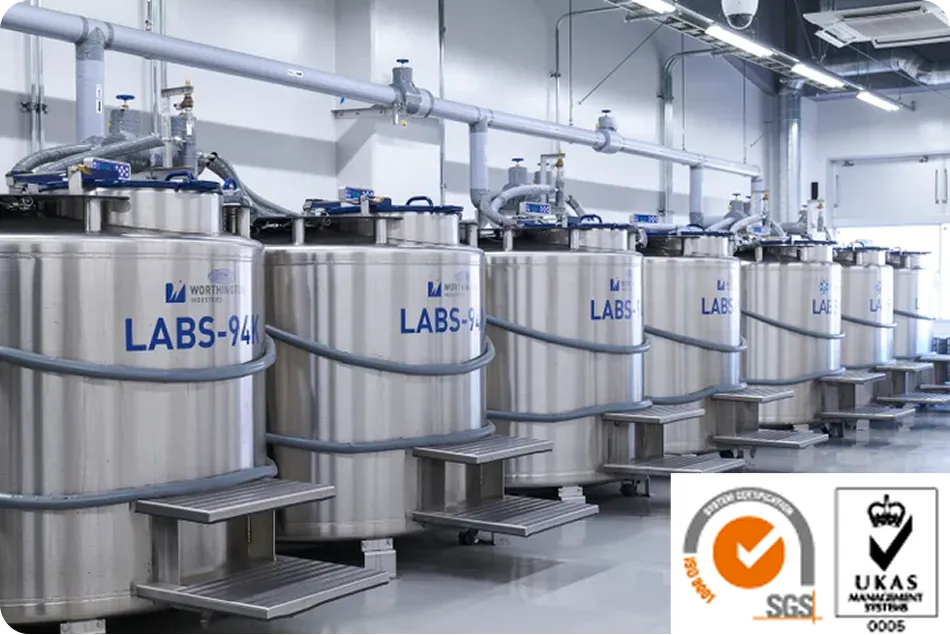About Cord Blood and Umbilical Cord


Cord blood can only be collected within a few minutes after birth, making it a precious resource for the baby.

The collection process is completely safe and painless for both the mother and the baby.

Both sources contain a large number of stem cells.

A wide range of applications is progressing in the field of regenerative medicine.

Since each source contains different types of stem cells, storing both expands future treatment options.
What are Stem Cells?
Stem cells are the foundation of various types of tissues in the body. They have the ability to produce blood, differentiate into nerve cells, bones, muscles, and other types of cells. Since they can reduce inflammation in damaged areas and aid in tissue repair, they are expected to be applied in various treatments.


What is Cord Blood?
The umbilical cord is the lifeline connecting baby and mother; and the blood flowing inside the umbilical cord is cord blood, which is a rich source of multi-potent cells called stem cells. For instance, hematopoietic stem cells have a great ability to form cellular elements of blood, such as red blood cells (erythrocytes), white blood cells (leukocytes) and platelets (thrombocytes) – therefore, these cells are useful in treating various refractory blood diseases,such as leukemia and aplastic anemia.
Indeed, as cord blood is known to contain stem cells that have the potential to transform into a diverse range of varied cells, such as cells with the potential to aid repair of damage to the central nerves and autoimmunity as well as ischemic injury, the medical field is showing a surge of interest in cord blood in recent years, which is raising expectations for future applications in regenerative medicine and cell therapies that are at the clinical trial and research stages right now.
Potential of Umbilical Cord Blood
Cerebral Palsy
In Japan, research is being conducted into the administration of umbilical cord blood from babies or siblings to treat cerebral palsy. Clinical studies overseas have reported that administration improves motor function and neural circuits.
Autism Spectrum Disorder
It is expected that administration of umbilical cord blood may improve communication skills and social adaptability.
A clinical trial to administer a child's own umbilical cord blood has begun at Osaka Municipal University,
and participants will be recruited in the future.
What is Umbilical Cord?

The umbilical cord connects mother and baby. In recent years, it has been discovered that the umbilical cord contains a large number of mesenchymal
stem cells, which are widely studied in the field of regenerative medicine.
Mesenchymal stem cells have an ability to move on to areas of inflammation in
the body to soothe inflammation and repair damaged tissue.
StemCell Institute's umbilical cord storage service enables
the umbilical cord to be frozen and preserved alive.
By freezing and storing the umbilical cord at the time of delivery,
it may make it possible to use it for medical and other purposes for
your child and your family.
Potential of Umbilical Cord
Family Supernatant
Stem cell culture supernatant containing exosomes and cytokines can be produced from stored umbilical cord and used by family members.
Various regenerative medical care
Basic research on regenerative treatments of meniscus injuries and cleft palate is currently being conducted in Japan. Future applications in various fields of regenerative medicine are highly anticipated.
【Guide to cord blood transfusion treatment using EAP】
What is EAP (Expanded Access Protocol)?
The Expanded Access Protocol (EAP) is a program that enables patients to receive umbilical cord blood infusion using methods equivalent to those validated in clinical research.
At Duke University in the United States, this program provides umbilical cord blood infusion to patients up to 26 years old diagnosed with cerebral palsy, hypoxic-ischemic encephalopathy, and other brain disorders. To date, more than 500 patients from around the world have traveled to Duke University to receive treatment under this program.
Among those storing their cord blood with the Stem Cell Institute, 13 individuals have undergone umbilical cord blood infusion at Duke University as of October 2024.
For further details, please refer to National Library of Medicine
Disclaimer: The EAP is an independent program administered by Duke University and is not affiliated with our services. We bear no responsibility for the registration process or participation in this program.
Why Choose StemCell Institute

25years of expertise as a
leading private cord blood bank.

Over 80,000 cord blood units are stored with us.
Over 99% market share in private cord blood banks.

Our cord blood units have been used for treating leukemia andcerebral palsy, etc.
We are the only one that released cord blood units for treatments in domestic private banks.
- ISO 9001 certified.
We are the only private bank that certified according to ISO 9001 in Japan. - We are a member of Nihon Trim Group, the listed company in the first section of the Tokyo Stock Exchange.
- Cell Cryopreservation Center — One of the largest cryopreservation centers in Japan.
Cell Processing Center — State-of-the-art facility with security and safety.

Certified as a cell processing center and a cell cryopreservation center.
Pricing and Contract
①Please select your desired plan
One Hope Plan
Choose to store either
umbilical cord or cord blood

10 year storage price
¥342,600
-
With the "One Hope Plan" both the umbilical cord and the cord blood are collected at the time of birth, and either one is stored. You can choose which one to store when you sign the contract.
E.g.)
First choice: Cord blood
Second Choice: Umbilical cord -
If your first choice cannot be stored, you will be asked to choose one of the following:
①Keep second choice.
②Do not keep second choice (no fee will be charged) - If you upgrade your contract from the "One Hope Plan" to the "Double Hope Plan" after childbirth, an additional ¥50,000 as a change fee will be required in addition to the price difference between the plans.
Double Hope Plan
A unique and double-assurance plan by HopeCell that allows you to store both the umbilical cord and, cord blood

10 year storage price
¥457,600
- With the "Double Hope Plan" both the umbilical cord and the cord blood are collected at the time of birth, and both are stored.
- If, due to reasons such as not meeting storage standards, only one can be stored, the plan will be changed to the "One Hope Plan".
- Please be aware that after child birth, it is not possible to change from the "Double Hope Plan" to the "One Hope Plan".
②Please select years of storage you desire
You can choose from 5, 10, or 20 years of storage.
*A separate renewal registration fee of 5,500 yen
| One Hope Plan | Double Hope Plan | |
| 5 years of storage. | ¥309,600 | ¥391,600 |
| 10 years of storage. | ¥342,600 | ¥457,600 |
| 20 years of storage. | ¥408,600 | ¥589,600 |
All prices include tax.
③Please select your payment methhod
Please choose from the two options below.
We will send your invoice via E-mail apporoximately three weeks after the birth.





Multiple pregnancy discount
Repeat customer discount
¥100,000
discount/per child.
For twins, there is a total
discount of ¥200,000.
¥30,000
discount.
A special discount for those who
have previously used our service.
④Contact Procedure
If you (or your family) are currently pregnant and considering storage, we will send you the necessary documents via e-mail. Please fill out the form below and submit.
⑤Collection Kit delivery
After the contract is signed, we will deliver a'Collection
kit' required for the collection of the umbilical cord and cord blood to your home.
Please bring the Collection Kit to your maternity clinic when you are admitted.
If you would like the Collection kit to be sent to an alternative address, please inform
us using the form below.
There may be cases where collection orstorage is not possible.
- Collection may be difficult due to circumstances during delivery- such as premature birth, emergency C-section, or excessive bleeding.
- In the event that you give birth before receiving the collection kit.
- If the maternity clinic you are transferred to does not support collection.
- Collection or storage may be difficult due to the condition of the umbilical cord or the cord blood.
- If the amount of collected umbilical cord or cord blood is extremely small.
- If the umbilical cord or cord blood does not meet the standards set by our company.
- In the event that residual bacteria are detected in the general bacterial test (cord blood only).
⑥Please submit the'Request Form and Agreement'
to your maternity clinic.

How to fill out the 'Request Form and Agreement'.
Please make sure to provide the expected delivery date at 40 weeks, 0 days.
(If the medical card number is unknown, it is not necessary to provide the information, please leave it blank.)
Regarding Contract Renewal
After the contract period for the One Hope Plan / Double Hope Plan ends,
you can renew the contract.
| Renewal fees | |||
| 5years | 10years | 20years | |
| Either umbilical cord, or cord blood | ¥33,000 | ¥66,000 | ¥132,000 |
| Both umbilical cord and cord blood | ¥66,000 | ¥132,000 | ¥264,000 |
will be charged for each contract
*All prices include tax.
